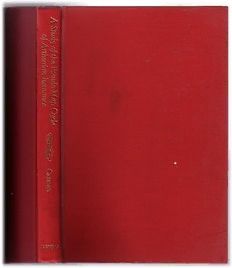
A Study of the Pseudo-Map Cycle of Arthurian Romance, to Investigate its Historico-Geographic Background and to Provide a Hypothesis as to its Fabrication PDF
Preview A Study of the Pseudo-Map Cycle of Arthurian Romance, to Investigate its Historico-Geographic Background and to Provide a Hypothesis as to its Fabrication
A Study of the Pseudo-Map Cycle of Arthurian Romance A Study of the Pseudo-Map Cycle of Arthurian Romance TO INVESTIGATE ITS HISTORICO-GEOGRAPHIC BACKGROUND AND TO PROVIDE A HYPOTHESIS AS TO ITS FABRICATION by J. Neale Carman THE UNIVERSITY PRESS OF KANSAS La wrence/ Manhattan/ Wichita © Copyright 1973 by The University Press of Kansas Standard Book Number 7006-0100*7 Library of Congress Catalog Card Number 72-88008 Designed by Fritz Reiber Preface The study that follows originated with the sole intention of investigating the geography of the Mort Artu and of the beginning of the Prose Lancelot. Progress in that fruitful task also revealed prob able historical background, which turned out to be of such extensive and varied nature as to give rise to an hypothesis concerning the manner of fabrication of the Cycle. The hypothesis necessarily takes into account the ideologies exhibited in the pseudo-Map Cycle. It is my hope that the readers of this study will discern material valuable, not only in recognizing when, where, and how the Cycle was written, but also in measuring aesthetic and intellectual qualities of the Cycle. After the manuscript of this study had reached tentative com pletion, it received serious and detailed criticism from three co-workers in the field of Arthurian romance. To them I gratefully tender my thanks, and to them the study owes great improvement both in form and in the presentation of the facts and arguments. They are Professors Norris J. Lacy and Myra Olstead Hinman of the University of Kansas and Professor William Roach of the University of Pennsylvania. From Professor Roach also came encouragement to develop the last chapter when, without knowledge of the preceding chapters, he saw a pre liminary sketch of it. I do not claim that either he or the other two agree with speculative conclusions, but their sympathetic reception of the ideas that I have proposed leads me to hope that the study will not lack interest for other readers. v
